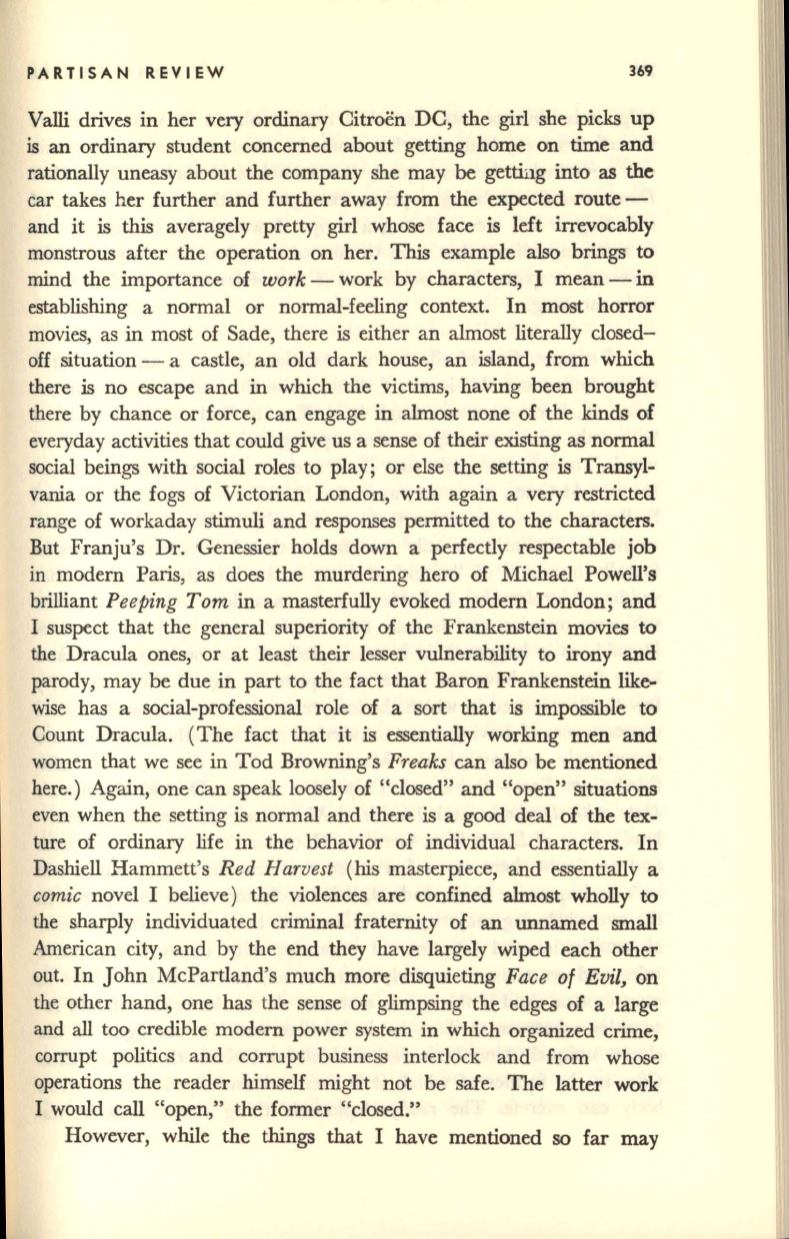
PARTISAN REVIEW
369
Valli drives in her very ordinary Citroen DC, the girl she picks up
is an ordinary student concerned about getting home on time and
rationally uneasy about the company she may
be
gettlilg into .as the
car takes her further and further away from the expected route–
and it is this averagely pretty girl whose face is left irrevocably
monstrous after the operation on her.
This
example also brings to
mind the importance of
work
-
work by characters, I mean - in
establishing a normal or normal-feeling context. In most horror
movies, as in most of Sade, there is either an almost literally closed–
off situation - a castle, an old dark house, an island, from which
there is no escape and in which the victims, having been brought
there by chance or force, can engage in almost none of the kinds of
everyday activities that could give us a sense of their existing as normal
social beings with social roles to play; or else the setting is Transyl–
vania or the fogs of Victorian London, with again a very restricted
range of workaday stimuli and responses permitted to the characters.
But Franju's Dr. Genessier holds down a perfectly respectable job
in modern Paris, as does the murdering hero of Michael Powell's
brilliant
Peeping Tom
in a masterfully evoked modern London; and
I suspect that the general superiority of the Frankenstein movies to
the Dracula ones, or at least their lesser vulnerability to irony and
parody, may be due in part to the fact that Baron Frankenstein like–
wise has a social-professional role of a sort that is impossible to
Count Dracula. (The fact that it
is
essentially working men and
women that we see in Tod Browning's
Freaks
can also be mentioned
here.) Again, one can speak loosely of "closed" and "open" situations
even when the setting is normal and there is a good deal of the tex–
ture of ordinary life in the behavior of individual characters. In
Dashiell Hammett's
R ed Harvest
(his masterpiece, and essentially a
comic
novel I believe) the violences are confined almost wholly to
the sharply individuated criminal fraternity of an unnamed small
American city, and by the end they have largely wiped each other
out. In John McPartland's much more disquieting
Face of Evil,
on
the other hand, one has the sense of glimpsing the edges of a large
and all too credible modern power system in which organized crime,
corrupt politics and corrupt business interlock and from whose
operations the reader himself might not be safe. The latter work
I would call "open," the former "closed."
However, while the things that I have mentioned so far may


